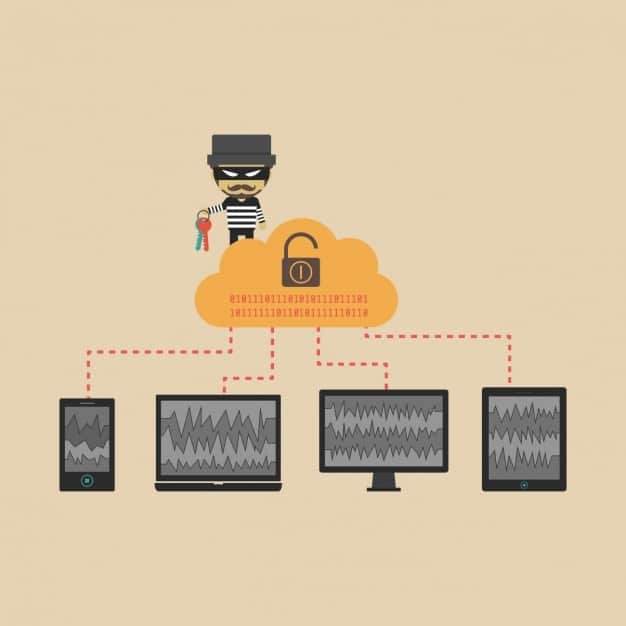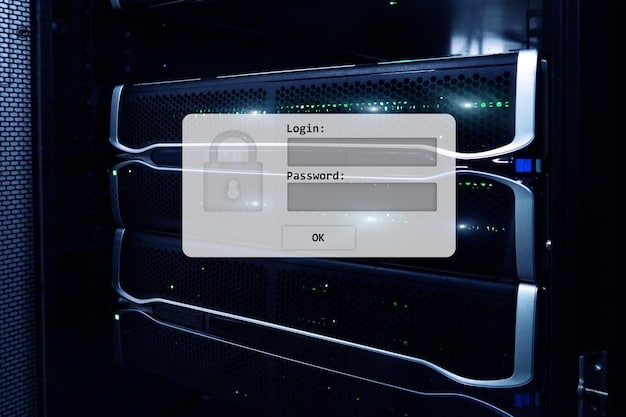Is Your Home Router a Security Risk? Secure It in 2025

In 2025, home routers remain a significant security risk, but by implementing steps like updating firmware, changing default passwords, enabling WPA3 encryption, disabling remote access, and setting up a guest network, you can significantly enhance your network’s security.
Is your home router leaving you vulnerable to cyber threats? As we move into 2025, securing your router is more critical than ever. This guide outlines five essential steps to protect your home network and personal data.
Understanding the Risks: Why Your Router is a Target
Home routers are often overlooked when it comes to cybersecurity, but they serve as the gateway to your entire home network. This makes them a prime target for hackers looking to access your personal information, financial data, and even control smart home devices. Understanding these risks is the first step in securing your network.
The Router as a Gateway: A Central Point of Attack
Your router is the central hub through which all your internet traffic flows. If compromised, it can expose every device connected to your network.
Common Router Vulnerabilities
Default passwords, outdated firmware, and weak encryption methods are just some of the vulnerabilities that hackers exploit.
- Malware Infections: Routers can be infected with malware that redirects your traffic to malicious websites.
- Data Theft: Hackers can intercept sensitive data transmitted over your network.
- Botnet Recruitment: Compromised routers can be used as part of botnets for large-scale cyberattacks.
By understanding these risks, you can appreciate the importance of taking proactive steps to secure your router.

In conclusion, recognizing the vulnerabilities of your home router highlights the critical need for robust security measures. By addressing these risks head-on, you significantly reduce the potential for cyberattacks and protect your digital life.
Step 1: Update Your Router’s Firmware
Keeping your router’s firmware up to date is one of the most effective ways to protect against security threats. Firmware updates often include patches for newly discovered vulnerabilities, ensuring your router is protected against the latest exploits.
Why Firmware Updates Are Crucial
Firmware updates are not just about adding new features; they often contain critical security fixes that address known vulnerabilities.
How to Update Your Firmware
The process varies depending on your router’s manufacturer, but generally involves accessing the router’s administration panel through a web browser.
- Automatic Updates: Enable automatic firmware updates if your router supports it.
- Manual Updates: Regularly check for updates on the manufacturer’s website and install them manually.
- Regular Checks: Make it a habit to check for updates at least once a month.
Updating your router’s firmware is a simple yet powerful step in bolstering your home network’s security. It ensures that your device is equipped with the latest defenses against emerging threats.
In summary, regularly updating your router’s firmware is essential for maintaining a secure home network. This practice ensures that your router is protected against the latest security threats and vulnerabilities.
Step 2: Change the Default Password
One of the most common security mistakes is using the default password that comes with your router. Hackers are well aware of these default credentials and often use them to gain unauthorized access to networks. Changing your password to a strong, unique one is a simple but crucial step.
The Danger of Default Passwords
Default passwords are easily guessable and widely known, making them an easy target for hackers.
Creating a Strong Password
A strong password should be long, complex, and unique.
- Length: Aim for at least 12 characters.
- Complexity: Include a mix of uppercase and lowercase letters, numbers, and symbols.
- Uniqueness: Do not reuse passwords from other accounts.
Changing your default password is a fundamental security practice that significantly reduces the risk of unauthorized access to your home network. It’s a simple action that can have a big impact on your overall security.
In conclusion, changing your router’s default password to a strong, unique one is a critical step in securing your home network. This simple action can prevent unauthorized access and protect your personal data from cyber threats.
Step 3: Enable WPA3 Encryption
Wi-Fi Protected Access 3 (WPA3) is the latest wireless security protocol, offering significant improvements over its predecessor, WPA2. Enabling WPA3 encryption provides stronger protection against password cracking and other types of attacks. If your router and devices support WPA3, it’s highly recommended to enable it.
Advantages of WPA3
WPA3 offers enhanced security features, including stronger encryption and improved password protection.
How to Enable WPA3
The process varies depending on your router’s interface, but generally involves accessing the wireless settings and selecting WPA3 as the encryption method.
Compatibility Considerations
Ensure all your devices support WPA3 before enabling it, as older devices may not be compatible.
Enabling WPA3 encryption is a significant upgrade to your home network’s security, providing stronger protection against various types of attacks. It’s a proactive step that ensures your wireless traffic is secure and protected.
In summary, enabling WPA3 encryption is a crucial step in enhancing your home network’s security. By upgrading to this latest wireless security protocol, you gain stronger protection against password cracking and other cyber threats, ensuring your data remains secure.

Step 4: Disable Remote Access
Remote access allows you to manage your router from anywhere in the world, but it also creates a potential security risk. If you don’t need to access your router remotely, it’s best to disable this feature. This prevents hackers from exploiting vulnerabilities in the remote access interface.
The Risks of Remote Access
Remote access can be exploited by hackers to gain unauthorized control of your router.
How to Disable Remote Access
The process involves accessing your router’s administration panel and disabling the remote access feature. This is usually found in the advanced settings.
Disabling remote access is a simple way to reduce the attack surface of your router and prevent unauthorized access. It’s a proactive step that minimizes the risk of remote exploitation.
In conclusion, disabling remote access to your router is a prudent security measure, especially if you don’t need to manage your network remotely. This action reduces the potential attack surface and protects your router from unauthorized access and exploitation.
Step 5: Set Up a Guest Network
Creating a guest network is a great way to provide internet access to visitors without giving them access to your main network. This isolates your personal devices and data from potential threats that guests might unknowingly introduce.
Benefits of a Guest Network
A guest network keeps your main network secure by isolating guest traffic.
How to Set Up a Guest Network
Most routers offer a guest network feature, which can be enabled through the administration panel.
- Enable Guest Network: Activate the guest network option in your router’s settings.
- Set a Password: Create a separate password for the guest network.
- Limit Access: Ensure guests cannot access devices on your main network.
Setting up a guest network is a smart way to protect your home network from potential threats introduced by visitors. It adds an extra layer of security without inconveniencing your guests.
In summary, setting up a guest network is a practical security measure that protects your main network from potential threats introduced by visitors. By isolating guest traffic, you ensure the security of your personal devices and data.
| Key Point | Brief Description |
|---|---|
| 🛡️ Update Firmware | Keep router software updated for latest security patches. |
| 🔑 Change Password | Replace default password with a strong, unique one. |
| 🔒 Enable WPA3 | Use the latest Wi-Fi security protocol for enhanced encryption. |
| 📡 Guest Network | Isolate guest connections from your main network for added security. |
Frequently Asked Questions
▼
Router security is crucial because your router is the gateway to your entire home network. A compromised router can expose all connected devices to cyber threats, including data theft and malware infections.
▼
You should check for firmware updates at least once a month. Enabling automatic updates, if available, is also a good practice to ensure you always have the latest security patches.
▼
A strong password should be at least 12 characters long and include a mix of uppercase and lowercase letters, numbers, and symbols. Avoid using easily guessable information or reusing passwords.
▼
WPA3 is the latest Wi-Fi security protocol, offering stronger encryption and improved password protection compared to WPA2. It provides enhanced security against password cracking and other types of attacks.
▼
Setting up a guest network is highly recommended. It isolates guest traffic from your main network, preventing potential threats from spreading to your personal devices and data.
Conclusion
Securing your home router is a proactive step toward protecting your digital life in 2025. By following these five steps – updating firmware, changing the default password, enabling WPA3 encryption, disabling remote access, and setting up a guest network – you can significantly reduce your risk of falling victim to cyber threats and ensure a safer, more secure home network.





